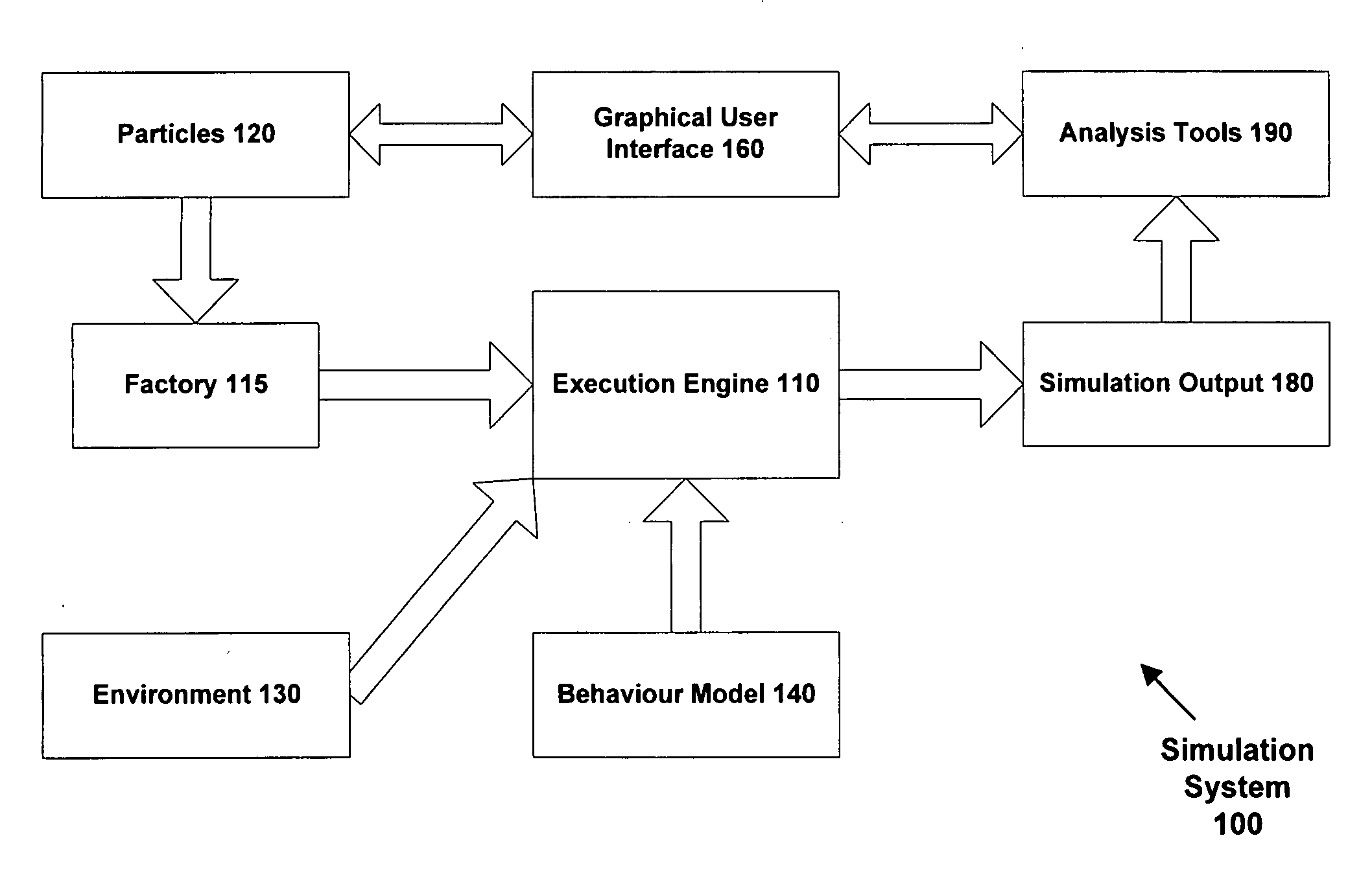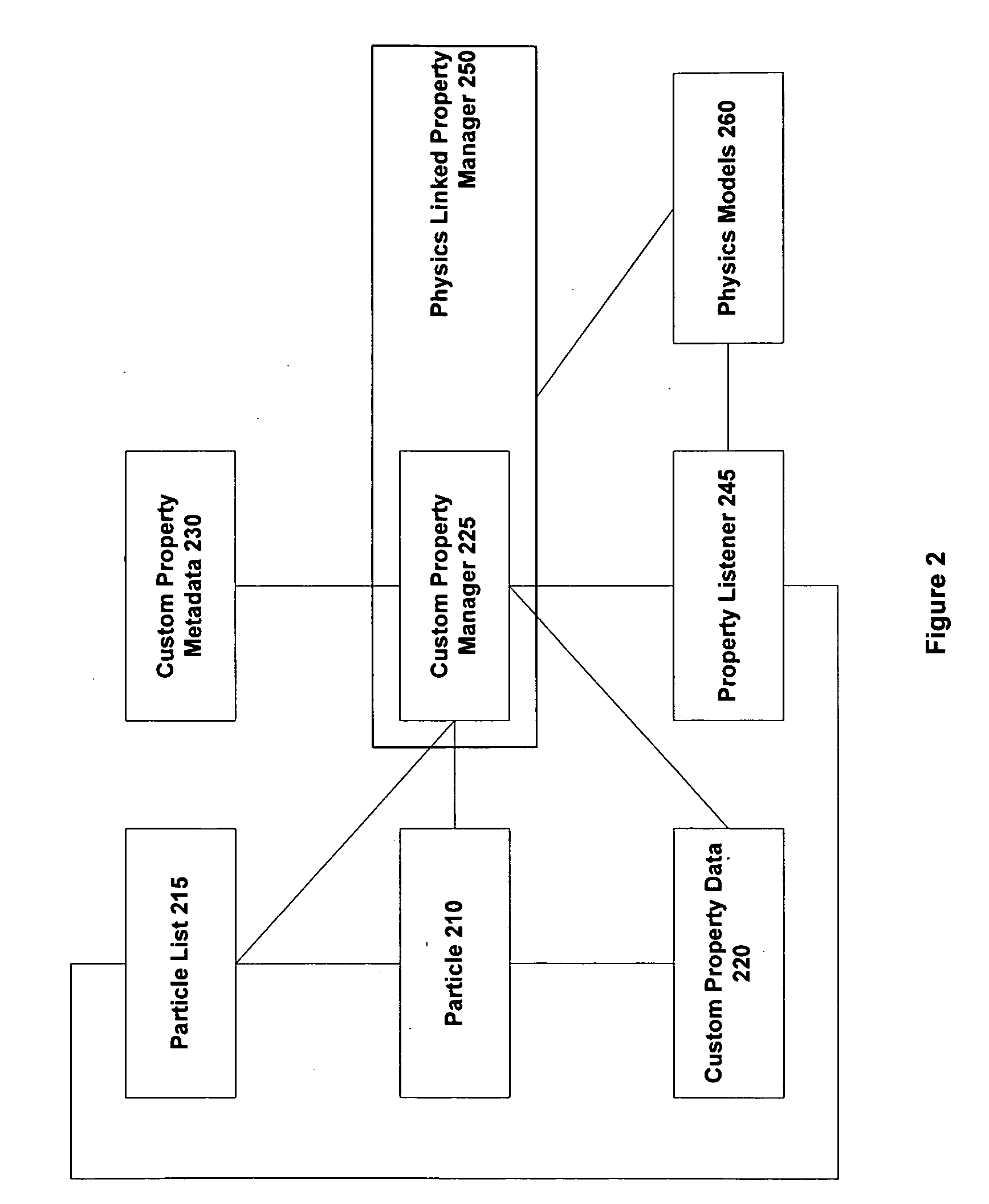Method and apparatus for simulation by discrete element modeling and supporting customisable particle properties
a discrete element and particle technology, applied in the field of simulation systems, can solve the problems of inability to meet the requirements of other simulations, particle temperature may not be relevant for other simulations, and existing systems have limited flexibility for coping, etc., to achieve easy extension, increase flexibility, and widen the scope of use
- Summary
- Abstract
- Description
- Claims
- Application Information
AI Technical Summary
Benefits of technology
Problems solved by technology
Method used
Image
Examples
Embodiment Construction
[0017]FIG. 1 is a schematic diagram showing the operation of a simulation system 100 in accordance with one embodiment of the invention. The simulation system is based on an execution engine 110 which takes as input:
[0018](a) a set of particles 120 with properties, such as shape, size, etc. The properties typically specify physical attributes of the particles, as well as parameters for use in the simulation, such as residence time. The system supports multiple different types of particles in a single simulation.
[0019](b) an environment 130 specifying the surroundings of the particles, including boundary conditions and geometry elements. The environment determines the presence of other objects with which the particles may interact and whose behaviour is controlled separately from the particles themselves. The environment may define (for example) the size and shape of a container holding the particles, any objects within the container, plus any operational movement (such as for a conv...
PUM
 Login to View More
Login to View More Abstract
Description
Claims
Application Information
 Login to View More
Login to View More - R&D
- Intellectual Property
- Life Sciences
- Materials
- Tech Scout
- Unparalleled Data Quality
- Higher Quality Content
- 60% Fewer Hallucinations
Browse by: Latest US Patents, China's latest patents, Technical Efficacy Thesaurus, Application Domain, Technology Topic, Popular Technical Reports.
© 2025 PatSnap. All rights reserved.Legal|Privacy policy|Modern Slavery Act Transparency Statement|Sitemap|About US| Contact US: help@patsnap.com



